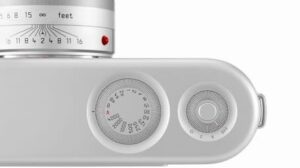Depth of Field Explained: Mastering the Art of Focus

A photograph’s depth of field (DoF) has immense influence on the visual narrative of the image. The ability to master this concept opens up a whole new realm of creative possibilities, allowing photographers to control the sharpness of their subjects and manipulate the background blur to evoke specific emotions or highlight certain features. Our comprehensive guide explores the definition, importance, and myriad factors affecting depth of field.
Demystifying Terminology:
A photographer’s understanding of depth of field is crucial. Depth of field is a fundamental concept in this understanding, indicating how sharp an image is from narrow/shallow/small to wide/deep/large. Each of these elements plays an important role in shaping depth of field and the overall aesthetic of an image, including bokeh, focal length, focal distance, infinity, hyperfocal, maximum aperture, minimum aperture, prime lenses, and variable aperture zoom lenses.
Depth of Field Is Important:

As well as being a technical aspect of photography, depth of field can be an important tool for storytelling and visual communication. Subjects can be isolated from their backgrounds, details can be highlighted, and dimensionality can be conveyed within a two-dimensional frame. In photography, photographers use depth of field to guide the viewer’s gaze and imbue meaning into their images.
Depth of Field and Aperture:
F-stops, or aperture size, are the primary determinant of depth of field. Smaller apertures (larger f-stop numbers) produce a wider depth of field, ensuring sharper images. When the aperture is larger (smaller f-stop number), the depth of field will be narrower, and areas beyond the focal point will be surrounded by creamy, ethereal bokeh.
Compression of distance and focal length:
As well as determining the field of view, focal length also influences depth of field perception. Even though the actual depth of field remains constant for different focal lengths, longer focal lengths make background elements appear out of focus and foreground subjects appear more prominent.
Hyperfocal distance and focus distance:

Depth of field is significantly influenced by the distance between the camera and the subject, known as focus distance. The depth of field increases as the focus distance moves towards infinity. A hyperfocal distance, on the other hand, indicates the closest point at which everything from that point to infinity will be rendered in acceptable focus, making it an important concept for landscape photographers.
Lens Speed and Variable Aperture Zoom Lenses:
In addition to determining the speed of a lens and whether it can achieve shallow depth of field, the maximum aperture is often denoted by its smallest f-stop number. Low-light photography and artistic endeavors require lenses with large maximum apertures so they can achieve faster shutter speeds and exquisite bokeh. Moreover, variable aperture zoom lenses present complexities in maintaining a consistent depth of field across different focal lengths, requiring careful consideration and adaptability.
Size and depth of field of the sensor:

Larger sensors are associated with shallower depth of field, with smaller sensors being associated with shallower depth of field. To maintain the desired ratio of sharpness to blur, compositional adjustments may be necessary regardless of sensor size.
In conclusion:
Photographers can infuse their images with intentionality and artistic vision by mastering depth of field. By understanding the interplay between aperture, focal length, focus distance, and sensor size, photographers can use depth of field as a powerful tool for narrative expression. Photographers unlock the full potential of depth of field through experimentation, practice, and a deep understanding of the underlying principles.



